How To Fireproof A Gun Safe?
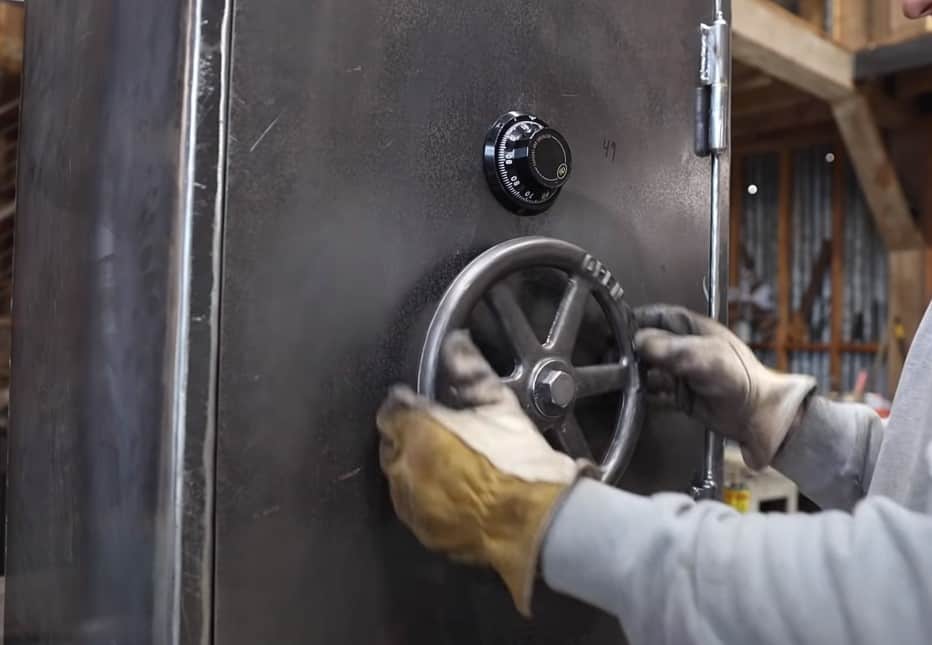
Gun safes are a must-have in any household with guns. They can be easily found in homes and businesses. The problem with them is that they are not always fireproof and are vulnerable to fire damage.
The best way to prevent your gun safe from catching on fire is by making sure you have the right kind of fireproof materials inside of it, as well as the best way to put them in place properly.
So, how do you make a gun safe fireproof? If you want a straight answer, then…you don’t. The long answer is that you can make some modifications to your safe so it can better resist fire.
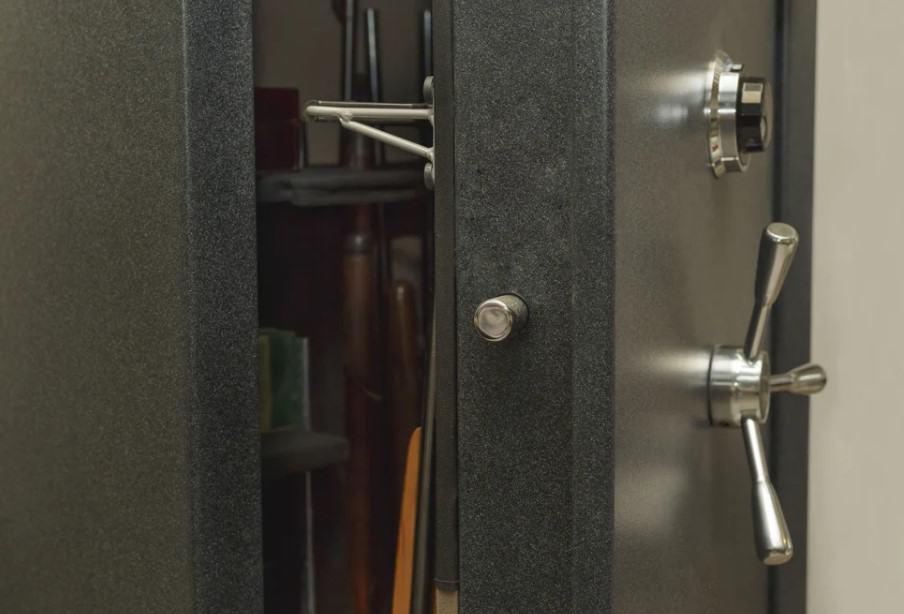
You might be wondering, why not just get fireproof safe? Yes, that is a good option, but what if you already have a gun safe and want to make it fireproof?
In case you didn’t know, fireproof safes are not fire resistant, but they are made with materials that will resist the heat of a fire for a certain amount of time.
The length of time varies depending on how thick the walls or doors are, how much insulation there is, and the type of material it is made from.
Is It Necessary To Fireproof A Gun Safe?
A gun safe is an investment, so it is important to consider what will happen if things go wrong.
Keeping Valuables Safe
It goes without saying that you will use your 500-dollar gun safe for more than just securing firearms and ammunition. In addition to money, documents, and passports, you may also need to preserve other valuables.
Unless you ensure fire safety, all of these important things could be damaged by fire. It will be possible to get new firearms and a gun safe or to be compensated by your insurance company. However, you cannot buy your family’s memories or important documents that were damaged by fire.
Keeping Firearms Safe
The most important thing is to ensure the safety of your firearms. Therefore, all safety measures must be followed to ensure your safety.
Security cannot be ensured only by purchasing a good under bed safe. It only takes a few minutes for a fire to destroy your gun safe. For this reason, you should fireproof your gun safe in order to avoid the loss of firearms in the event of a fire.
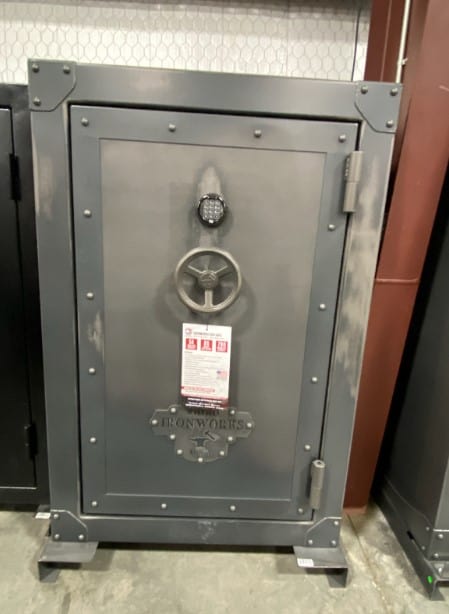
All You Need To Know About Making A Gun Safe Fireproof
A fireproof gun safe can be defined as a safe that is resistant to the spread of fire and has a high enough heat resistance. There are many brands and models of these safes.
Safes with a half-hour or one-hour rating are usually of good quality. They will, therefore, tolerate a typical house fire for the rated time frame without causing significant damage.
Nevertheless, you may need to cut them open to get the contents out. Now that that’s out of the way let’s look at some fireproof methods you can use with your safe gun.
1. Using Sheetrock
You can line the interior of a safe with multiple layers of sheetrock if you don’t want to pay the premium for a higher-quality safe. This is how safe manufacturers get their fire ratings.
You will be able to protect the contents of the safe for a longer period the more layers of sheetrock you use. A smaller interior will result from using more layers. It is likely that there will be a lot of condensation inside the safe when it cools down due to the role that water plays in the process.
It would be wise to open the safe as soon as possible after a fire and remove the contents. Guns and documents do not do well with high moisture.
It is not difficult to fireproof a gun safe, but it does take some time and attention. Tools that are specifically designed for this purpose are also needed.
2. Using Gypsum Board
Gypsum boards (drywall) mounted between metal sheets outside a safe are commonly used for fireproofing. In addition to including hydrates, gypsum board is fire-resistant because it releases steam or vapor when sufficiently heated.
In almost all cases, gypsum board surfaces contain hydrates, meaning the critical temperature of the gas inside is not reached at the safe interior pressure. Located on the inside of a fire-resistant safe, it serves as both a fire-limiter and a fire-resistance safe.
Fire-resistant safes also have a seal on the inside that protects them against fire heat from the outside. In addition to serving as a fire limiter, this safe is also fire-resistant. Over a specified period, you must maintain a balance between humidity and temperature.
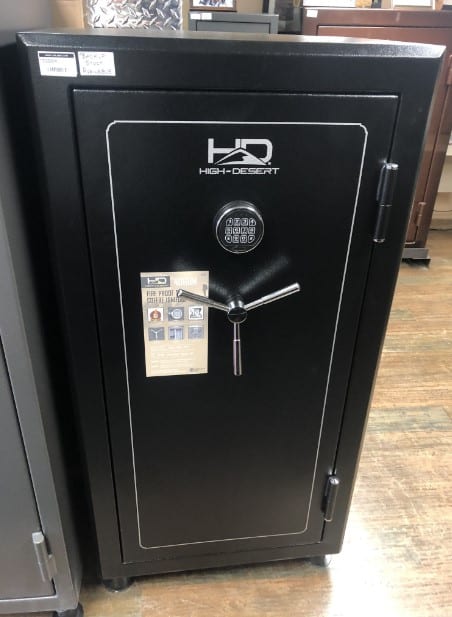
3. Insulate With Flame Retardant Materials
You can use the insulator to keep the temperature normal inside the safe, especially if you use it inside the gun safe. Keep the temperature inside the gun as low as possible during a fire by using as much insulation as possible.
To ensure a perfect fit inside the safe, you need to make sure your insulation fits perfectly. Cutting insulation and gluing it to the gun safe wall can be done with a hacksaw.
The most important thing is that the insulation must be flame retardant otherwise, all your efforts will be for nothing. The exterior part of the gun safe can be finished with a 5/8-inch drywall or gypsum board.
A good flame retardant insulator is a gypsum board. However, it is unlikely that thick drywall will protect you from fire for an extended period of time. The drywall you need can be purchased at any local hardware store.
4. Avoid Storing Flammable Materials In Gun Safes
It is a good idea to keep wooden items and flammable materials away from your gun safe.
The following substances are flammable:
- Gasoline
- Hand sanitizer
- Turpentine,
- Paint thinner,
- Aerosol cans,
- Non-dairy creamer,
- Linseed oil,
- Rubbing alcohol,
- Nail polish,
- Nail polish remover,
- And gun cleaning solvent.
Regardless of whether you have a fingerprint scanner safe or bedside safe, you shouldn’t keep these items near it.
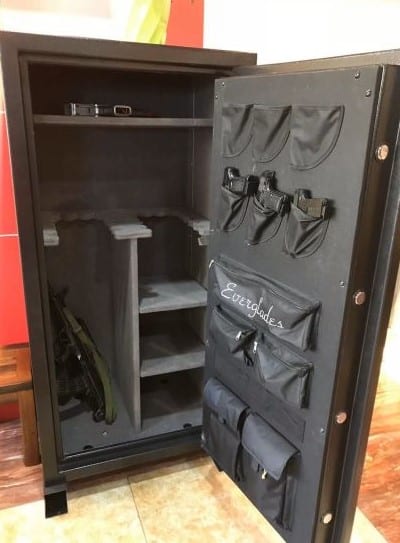
5. Adding Steel To The Door Frames And Doors
Applying metal sheets directly to your gun safe’s exterior surfaces is another great way to make it more secure if you can afford it.
Aside from their ability to withstand high temperatures without catching on fire or melting, these types have also been proven to be totally resistant to thieves breaking into them in various laboratories worldwide!
Especially for people with children at home, this makes the most popular choice when they need extra protection during an emergency.
It is possible to add a layer of solid wood over the frame of the door even with a less expensive option if this solution does not fit your budget.
6. Choose A Suitable Place For Your Gun Safe
It is not enough to have a fireproof gun safe. Finding a suitable location for a gun safe is key to fireproofing it. Ensure your gun is safe in a basement on a concrete floor or slab to avoid catching fire from below. For extra security, keep other items away from the gun safe.
Nevertheless, if you do not have a basement, keep it somewhere that is secure and isolated. Keep your safe away from wooden floors and weaker floors. The gun safe should not be placed on an upper floor if it is heavy as it could fall through the floor during an extreme fire scenario.
7. Keep Moisture And Rust At Bay
Excess moisture affects gun safes and guns, which can lead to rust and mold. In the long run, gun safes and guns are damaged and weakened by rust and mold.
Consequently, if there is a fire incident, the weaker point of the guns could easily be attracted. As a result, fire protection becomes less effective.
To prevent moisture from entering gun safes and increase fire protection, we recommend using moisture absorbers for gun safes.
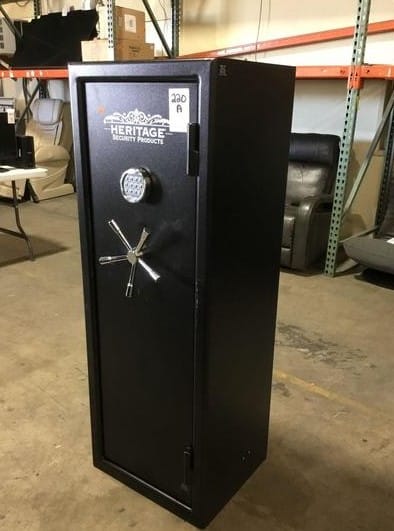
8. Avoid Storing Your Guns With Bullets Inside
Even if you have bullets inside your gun, you still can’t fire it unless you pull the trigger. However, change in the air pressure, especially in a warm environment, can cause bullets to be released without the need for a trigger pull.
In the event of a fire, the gun safe’s surroundings can become very hot, increasing the chance of bullets accidentally releasing. You should also consider the safety of your gun. Make sure your firearms are safe by keeping bullets outside.
The only exception to this rule is if you are storing your handgun inside a car safe.
9. Put A Soft Carpet Or Rubber Mat Under The Gun Safe
Moisture can accumulate on the safe’s bottom when it comes in contact with hard materials such as concrete, wood, and slabs. It is recommended that you use a soft rubber mat and carpet under the gun safe to get rid of moisture and rust.
If you’d like more information about this, you can also read our guide on what to put under a gun safe on concrete.
10. Use Fire Chests
You should purchase a fire safe that is also rated as a media chest to use it as a fireproof safe. In other words, magnets, photos, paper, and other media will be protected.
Your items will not burn because it will keep the fire from spreading. It should maintain a temperature of about 150 degrees Fahrenheit inside. This type of chest is usually equipped with a lock for additional security.
You should add additional protection to a fireproof chest even if it is locked. In order to prevent damage from humidity, it is recommended to place your valuables in a water-resistant and fireproof bag and seal it.
The internal parts of a fire chest can become very humid, so it is advised to put them in such a bag. Additionally, if you want to maximize protection against burglars, you can place your valuables in a small, non-fireproof safe inside the chest for extra security.
By doing this, thieves would have to break through two sets of locks instead of just the fire chest’s lock, thereby maximizing safety.
You can create a makeshift fireproof safe by putting your items in a waterproof package, placing that package in a small safe, and placing the safe in a fireproof chest.
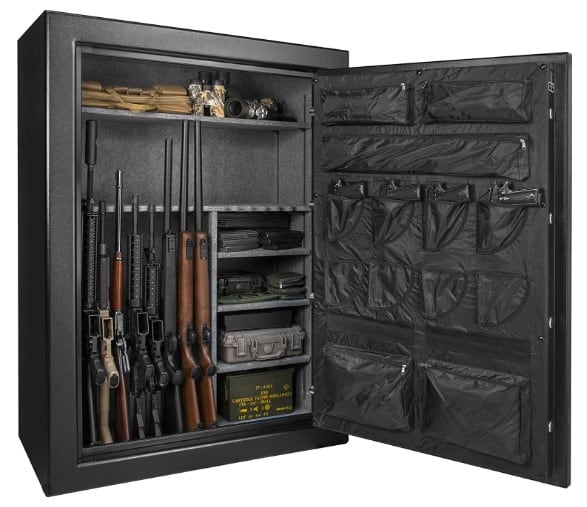
Invest In A Fireproof Gun Safe
The best way to protect your firearms and ammunition from fire is to invest in a branded fireproof gun safe. However, when purchasing a fireproof gun safe, you should take a few factors into account.
It should be highly resistant to fire and endure the fire for a very long time. For maximum protection, it should protect fire for at least half an hour and for up to four hours at a temperature of 1400 degrees Fahrenheit or more.
Types Of Fireproof Safes
Here are some fireproof safes you can make on your own.
Safes With Fireboards
The main advantage of fireboard safes is their fire resistance, which is highly valuable. In addition, the lightweight design makes them easy to transport on a regular basis.
A fire-prone board is used to make insulating board panels. In the final assembly phase of the safe, these boards will be placed into their structure spaces.
Safes With Reinforced Fireboards
A reinforced fireboard safe can be produced with a thick steel layer on the exterior to increase theft protection. It results in stronger safe. A thicker steel safe may also produce more heat from the outside than a thinner steel safe, which implies it is much less fire-resistant.
Safes Made Of Composite Materials
Safes made of composite materials are fire-prone because they contain a cement-like material. Therefore, the polymer is poured into the storage containers of these types of safes to make them durable.
In many safes, manufacturers use materials that resist fire, such as gypsum mixed with fire-resistant materials.
What Is The Best Way To Fireproof A Wooden Gun Safe?
As wood itself is the fuel of fire, fireproofing a wooden gun safe is the most difficult job in the world. First, make sure you keep all flammable materials away from your safe.
Insulate the entire body of the gun safe with flame retardant insulation to prolong the firefighter’s response time.
Note From The Author:
You will certainly have to pay more for your safe if you want it to be fire-resistant. In other words, it means more fire boards, thicker steel, and a better seal around the door against smoke and fire.
A fire protection feature is the one I recommend paying more for. Having upgraded your fire protection will ensure you don’t regret your decision in the unlikely event of a house fire.
The Bottom Line
It is very difficult to create a fireproof safe with a drywall exterior, but it is possible to create a lockbox that has the appearance of one.
Additionally, to protect against small fires, you can use everyday storage containers in your freezer to conceal a safe that does not have a lock.
You can also create fireproof storage with two codes by placing a small safe in a fireproof chest with a lock. Hopefully, now you know how to make your gun safe fireproof.

